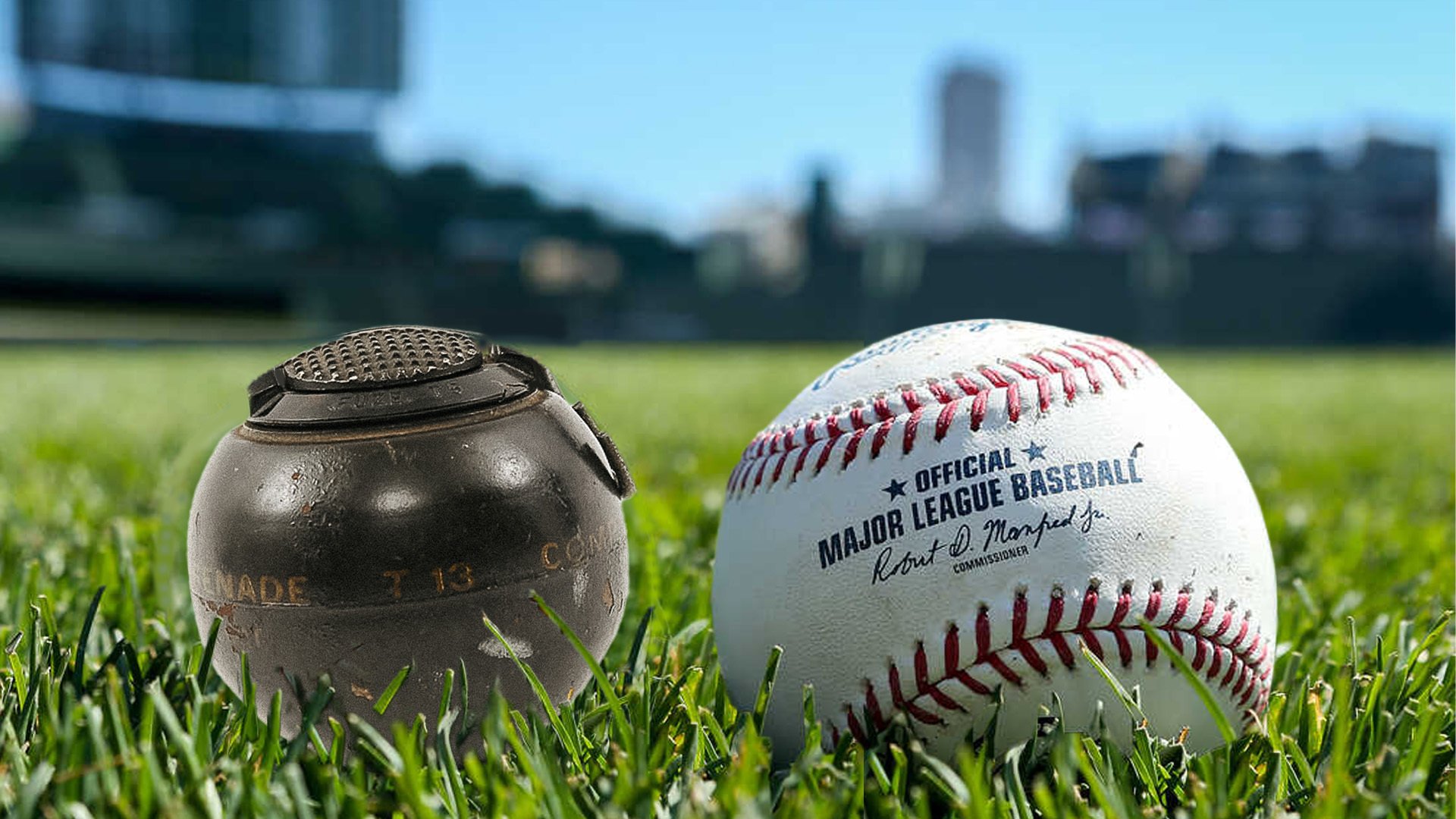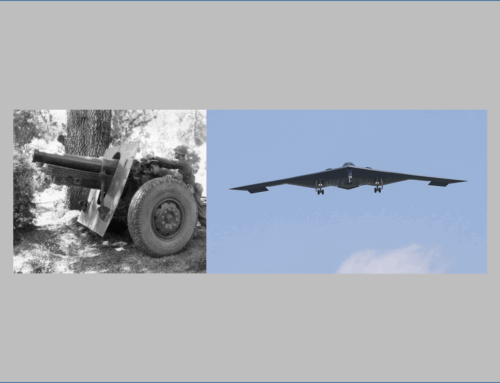How America’s Love For Baseball Shaped The Grenades Developed For US Troops During World War I
Published: 21 August 2023
By Matt Fratus
via the Coffee or Die web site

WWI Grenade and baseball
The T-13 hand grenade developed by the Office of Strategic Services, the precursor to the CIA, left, next to a Major League Baseball, right. Composite by Matt Fratus/Coffee or Die.
The United States military entered World War I in the spring of 1917. It quickly became clear that American doughboys were ill-equipped for fighting in the trenches of Europe. One crucial tool they lacked was a grenade that could be thrown far, fast, and accurately.
The Mk1 fragmentation grenade, issued to American troops during World War I, proved unreliable in combat. For one, detonating the Mk1 required several steps that had to be performed in a specific sequence. To initiate the time fuse, the thrower had to pull the safety pin, remove the top cap, then twist the lever with their thumb. In the chaos of battle, soldiers would often miss a step and throw an untriggered grenade at the enemy, only to have it tossed back at them fully armed.

In World War I, “baseball grenades” were an experimental concept relying on the logic that since many young men of the generation grew up playing on sandlots, then they would be equally capable of throwing a baseball-shaped hand grenade with precision. Photo courtesy of the website JF Ptak Science Books.
Once the need to replace the Mk1 became obvious, the US Army began exploring plans for a hand grenade that was similar to it in size and weight but easier for troops to arm and throw. Ultimately, the Army settled on the idea to field a grenade that resembled a baseball.
The logic was obvious. Many young men of that generation had grown up playing “America’s pastime,” whether in sandlots or on the streets. So it stood to reason that there were plenty of soldiers in the ranks for whom throwing a baseball-shaped grenade with precision would come quite naturally. As one Army sergeant explained it to a reporter at the time, “The French and Germans throw beer and wine bottle grenades, and what would come more handy to the hand of the average American soldier than a baseball grenade?”

Instructional document showing correct throwing technique of the Mk1 hand grenade used in World War I.
The first so-called “baseball grenades” were developed in 1916. One of the more promising prototypes was designed by a former pitcher for the US Military Academy at West Point’s baseball team. To throw it far and accurately, however, the thrower had to wear a special glove that put extra spin on the grenade so that it traveled through the air like a curveball. Perhaps for that reason, the prototype wasn’t greenlit for production, nor were any of the other baseball grenade concepts pitched to the Army during World War I.
Instead, in 1918, the US War Department upgraded the Mk1. The improved version, called the Mk2, had a more reliable time fuse than the Mk1, was shaped like a pineapple, and was designed to be thrown overhand like a baseball. Though it never saw action in World War I, it was the standard-issue hand grenade for American GIs at the onset of World War II.
Read the entire article on the Coffee or Die web site here:
External Web Site Notice: This page contains information directly presented from an external source. The terms and conditions of this page may not be the same as those of this website. Click here to read the full disclaimer notice for external web sites. Thank you.



